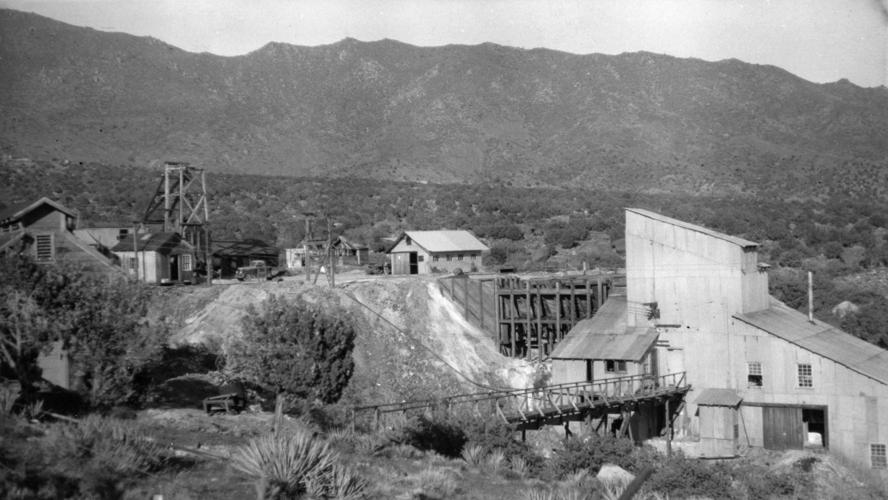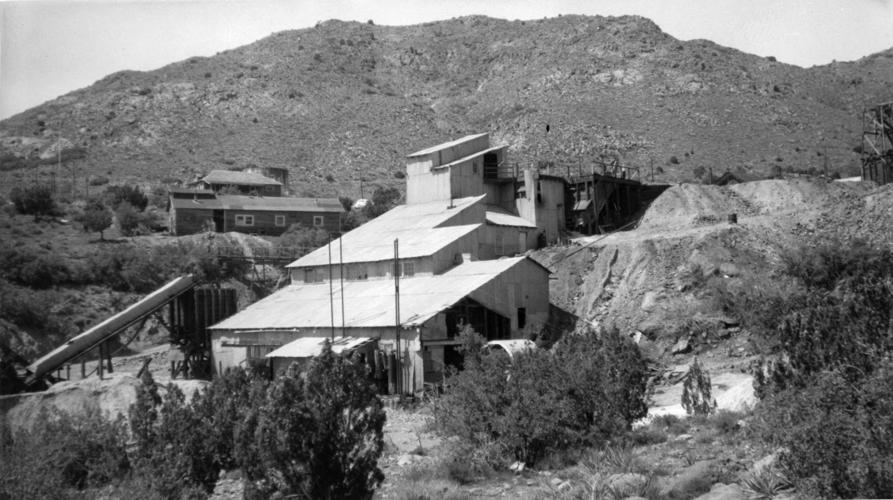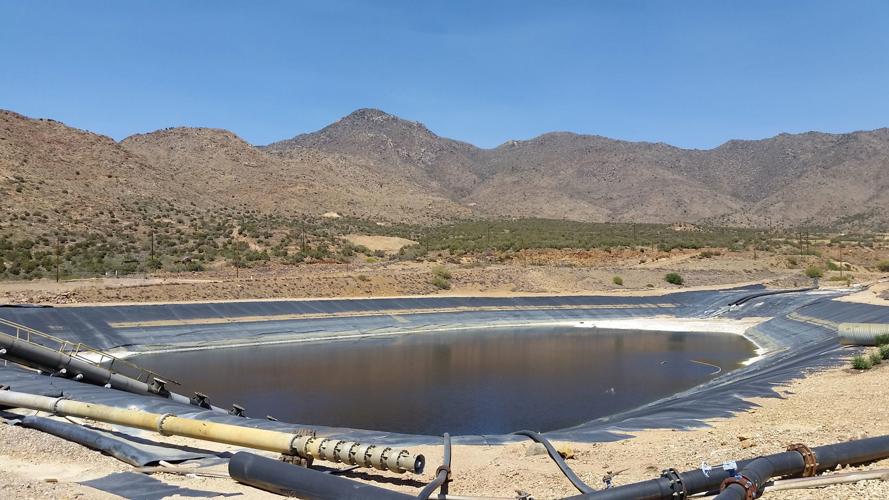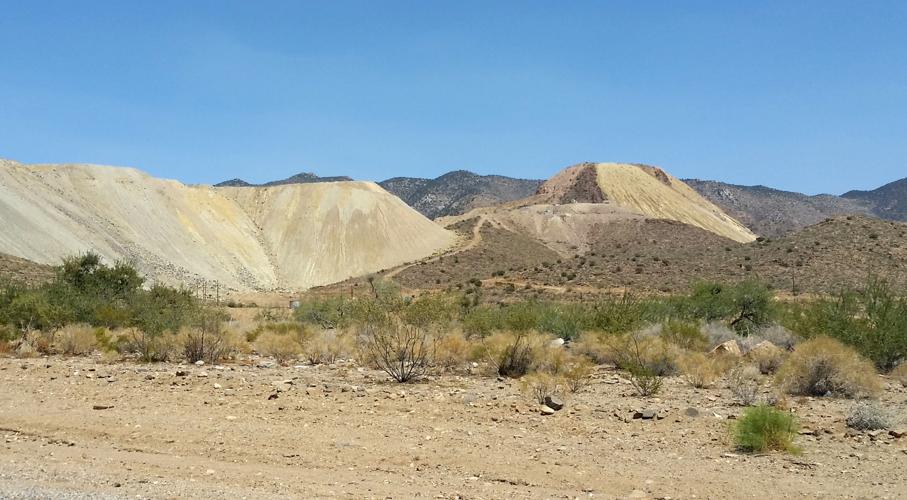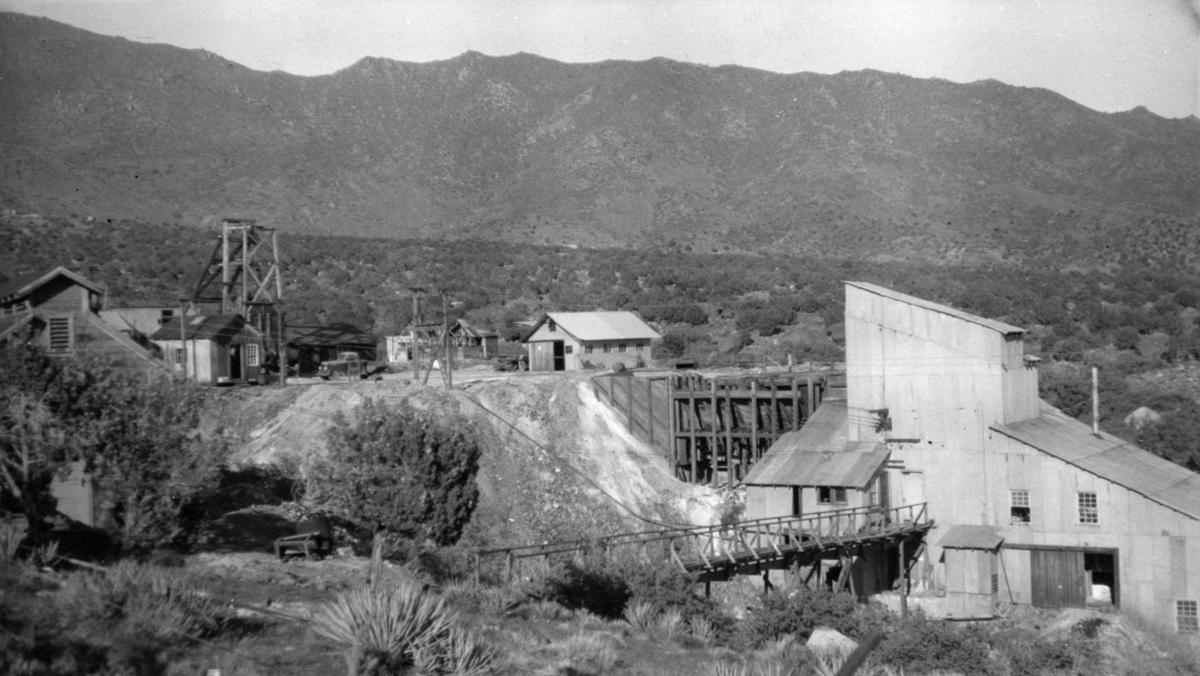One of the most prominent and historical mining operations in Mohave County is the Mineral Park Mine. Rugged topography marks the area averaging between 4,000 and 5,000 feet and renowned for its gem-quality turquoise found in gold-bearing quartz veins.
The site is 16 miles northwest of Kingman on the western slope of the Cerbat Mountain Range in the Mineral Park Mining district. Early mining was first conducted there 1,000 years ago by Indians who mined turquoise deposits for trade, as evidenced by stone hammers and other stone artifacts discovered in trenches, adits and other workings in and around Ithaca Peak and Turquoise Mountain.
Gold was discovered in the area in 1863, and the camp of Mineral Park was established seven years later with the discovery of rich silver ore. Many prospectors ventured into the area from California, Utah and Nevada, attracted to the triumvirate of quartz monzonite intrusive that composed Gross Peak, Ithaca Peak and Turquoise Mountain.
By 1876, Mineral Park mining town reached a population of 700, serving both as a supply center for nearby mining operations and as the county seat of Mohave County from 1873 through 1887. The town included stores, hotels and saloons, along with doctor’s, lawyer and assay offices, courthouse, jail, two stagecoach stations and a weekly newspaper, the Mohave County Miner.
A five-stamp mill was also established at the townsite. Gold and silver ore was shipped to the Selby smelter in San Francisco at a cost of $125 a ton. Richer ores were shipped as far as Wales in Great Britain for processing.
The town’s decline at the turn of the century was the result of the depletion of the rich oxide zone of silver chlorides once abundant in the area. Although attempts were made to obtain argentiferous galena and sphalerite ores at greater depth, profitability was not forthcoming and the town’s post office closed in 1912. All that remains of the town today are remnants of buildings and the town cemetery located on the private property of the current mine owner.
The most productive mine at Mineral Park was the Keystone Mine which produced 3,000 ounces of gold and 450,000 ounces of silver. It was the last of 225 mines and 1,000 prospects in the area to close in 1948.
Multiple attempts to develop the porphyry copper–molybdenum ore deposit at Mineral Park occurred throughout the 20th century. These were at or around Ithaca Peak. The Calumet and Arizona Co. undertook the first drilling in the area in 1906 for porphyry copper-molybdenum mineralization, yet production would not occur until 1964. Kennecott Copper also drilled six diamond holes along the eastern side of Ithaca Peak.

Another image of the mill in 1944 with a multi-bin ore shoot in the back.
However, it was not until the Duval Sulphur & Potash Co., later known as the Duval Corp., assumed control of the property beginning in 1959 that extensive exploration and geophysical methods were implemented. Two years later the company announced the discovery of a major copper-molybdenum deposit at Ithaca Peak.
This discovery was followed by an initial investment of $28 million of developmental work in the form of an onsite concentrator and 65 churn and diamond drill holes culminated in 1963 with the beginning of open pit mining operations. Production of copper and molybdenum concentrates began with up to 12,000 tons of ore processed daily.
Duval ended its onsite mining operations in 1986 having produced 90 million tons of tailings during its ownership. Cyprus Climax Metal Co. converted the property to a leach-solvent extraction-electrowinning operation in 1994. The mill was closed and drill and blast leaching was implemented by applying bore holes laden with explosives into chalcocite copper ore. Upon ignition the ore was rubblized and mixed with acidic ferric sulfate leach solution using a sprinkler system, with mineral recovery occurring in adjacent pits.
With the help of six 100-ton Terex trucks, Mercator Resources operated the mine in the early 2000’s with a production of 30,000 tons of ore and waste rock per day and a total estimate sulphide mineral reserve of over 350 million tons. Average copper grade mined was 0.3 grade and molybdenum grade 0.04. The leaching process involved 6 months to periodically drain the ponds to oxygenate the ore.
The mine is currently owned and operated by the Origin Mining Co. The adjacent area including Turquoise Mountain Peak continues to serve the gem-quality turquoise market.

The current leachate collection pond now operated by the Origin Mining Co.

The landmark Turquoise Mountain and overburden of Ithica Peak seen from Mineral Park Road off Highway 93.


